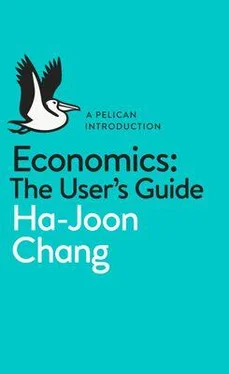Bruce Hood - The Domesticated Brain - A Pelican Introduction (Pelican Books)
Здесь есть возможность читать онлайн «Bruce Hood - The Domesticated Brain - A Pelican Introduction (Pelican Books)» весь текст электронной книги совершенно бесплатно (целиком полную версию без сокращений). В некоторых случаях можно слушать аудио, скачать через торрент в формате fb2 и присутствует краткое содержание. Год выпуска: 2014, ISBN: 2014, Издательство: Penguin Books Ltd, Жанр: Старинная литература, на английском языке. Описание произведения, (предисловие) а так же отзывы посетителей доступны на портале библиотеки ЛибКат.
- Название:The Domesticated Brain: A Pelican Introduction (Pelican Books)
- Автор:
- Издательство:Penguin Books Ltd
- Жанр:
- Год:2014
- ISBN:9780141974873
- Рейтинг книги:4 / 5. Голосов: 1
-
Избранное:Добавить в избранное
- Отзывы:
-
Ваша оценка:
- 80
- 1
- 2
- 3
- 4
- 5
The Domesticated Brain: A Pelican Introduction (Pelican Books): краткое содержание, описание и аннотация
Предлагаем к чтению аннотацию, описание, краткое содержание или предисловие (зависит от того, что написал сам автор книги «The Domesticated Brain: A Pelican Introduction (Pelican Books)»). Если вы не нашли необходимую информацию о книге — напишите в комментариях, мы постараемся отыскать её.
The Domesticated Brain: A Pelican Introduction (Pelican Books) — читать онлайн бесплатно полную книгу (весь текст) целиком
Ниже представлен текст книги, разбитый по страницам. Система сохранения места последней прочитанной страницы, позволяет с удобством читать онлайн бесплатно книгу «The Domesticated Brain: A Pelican Introduction (Pelican Books)», без необходимости каждый раз заново искать на чём Вы остановились. Поставьте закладку, и сможете в любой момент перейти на страницу, на которой закончили чтение.
Интервал:
Закладка:
12. J. Bowlby (1969), Attachment , Attachment and Loss , Vol. 1 , London: Hogarth Press.
13. K. Lorenz (1943), ‘Die Angebornen Formen mogicher Erfahrung’, Zeitschrift fur Tierpsychologie, 5, 233–409.
14. M. H. Johnson & J. Morton (1991), Biology and Cognitive Development: The Case of Face Recognition , Oxford: Blackwell.
15. P. S. Zeskind and B. M. Lester, (2001), ‘Analysis of infant crying’ in L. T. Singer and P. S. Zeskind (eds), Biobehavioral Assessment of the Infant , New York: Guilford, pp. 149–66.
16. E. E. Maccoby (1980), Social Development: Psychological growth and the parent-child relationship , New York: Harcourt Brace Janovich.
17. H. F. Harlow (1958), ‘The nature of love’, American Psychologist , 13, 573–685.
18. M. Rutter, T. G. O’Connor and The English and Romanian Adoptees (ERA) Study Team (2004), ‘Are there biological programming effects for psychological development? Findings from a study of Romanian adoptees’, Developmental Psychology , 40, 81–94.
19. J. A. Whitson and A. D. Galinsky (2008), ‘Lacking control increases illusory pattern perception’, Science , 322, 115–17.
20. T. V. Salomons, T. Johnstone, M. Backonja and R. J. Davidson (2004), ‘Perceived controllability modulates the neural response to pain’, Journal of Neuroscience , 24, 7199–203.
21. L. Murray, A. Fiori-Cowley, R. Hooper and P. Cooper (1996), ‘The impact of postnatal depression and associated adversity on early mother-infant interactions and later infant outcome’, Child Development , 67, 2512–26.
22 C. M. Pariante and A. H. Miller (2001), ‘Glucocorticoid receptors in major depression: Relevance to pathophysiology and treatment’, Biological Psychiatry , 49, 391–404.
23. C. S. de Kloet, E. Vermetten, E. Geuze, A. Kavelaars, C. J. Heijnen and H. G. M. Westenberg (2006), ‘Assessment of HPA-axis function in posttraumatic stress disorder: pharmacological and non-pharmacological challenge tests, a review’, Journal of Psychiatric Research, 40, 550–67.
24. A. K. Pesonen, K. Räikkönen, K. Feldt, K. Heinonen, C. Osmond, D. I. Phillips, D. J. Barker, J. G. Eriksson and E. Kajantie (2010), ‘Childhood separation experience predicts HPA axis hormonal responses in late adulthood: a natural experiment of World War II’, Psychoneuroendocrinology , 35, 758–67.
25. S. Clarke, D. J. Wittwer, D. H. Abbott and M. L. Schneider (1994), ‘Long-term effects of prenatal stress on HPA axis activity in juvenile rhesus monkeys’, Developmental Neurobiology , 27, 257–69.
26. Alice Graham, Phil Fisher and Jennifer Pfeifer (2013), ‘What sleeping babies hear: A functional MRI study of interparental conflict and infants’ emotion processing’, Psychological Science, 24, 782–9.
27. L. Trut, I. Oskina and A. Kharlamova (2009), ‘Animal evolution during domestication: the domesticated fox as a model’, BioEssays , 31, 349–60.
28. Molly Crockett (2009), ‘Values, Empathy, and Fairness across Social Barriers’, Annals of the New York Academy of Sciences , 1167, 76–86.
29. L. N. Trut, I. Z. Plyusnina and I. N. Oskina (2004), ‘An experiment on fox domestication and debatable issues of evolution of the dog’, Russian Journal of Genetics , 40, 644–55.
30. This is known as the James–Lange theory after Carl Lange developed William James’s initial proposal.
C. G. Lange and W. James (1922), The Emotions , Baltimore, MD: Williams & Wilkins.
31. This alternative to the James–Lange theory was the Cannon–Bard theory after W. B. Cannon (1929), ‘The James–Lange theory of emotion: A critical examination and alternative theory’, American Journal of Psychology , 39, 106–24.
P. Bard (1934), ‘On emotional experience after decortication with some remarks on theoretical views’, Psychological Review , 41, 309–29.
32. Joseph LeDoux (1998), The Emotional Brain , London: Weidenfeld & Nicolson.
33. S. Schacter and J. E. Singer (1962), ‘Cognitive, social and psychological determinants of emotional state’, Psychological Review , 69, 379–99.
34. Ian Pento-Voak, Jamie Thomas, Suzanne Gage, Mary McMurran, Sarah McDonald and Marcus Munafo (2013), ‘Increasing recognition of happiness in ambiguous facial expressions reduces anger and aggressive behavior’, Psychological Science , 24, 688–97.
35. R. M. Sullivan, M. Landers, B. Yeaman and D. A. Wilson (2000), ‘Good memories of bad events in infancy: Ontogeny of conditioned fear and the amygdala’, Nature, 407, 38–9.
36. S. Moriceau and R. M. Sullivan (2006), ‘Maternal presence serves as a switch between learning fear and attraction in infancy’, Nature Neuroscience, 9, 1004–6.
37. Sarah L. Master, Naomi I. Eisenberger, Shelley E. Taylor, Bruce D. Naiboff, David Shirinyan and Matthew D. Leiberman (2009), ‘A picture’s worth: Partner photographs reduce experimentally induced pain’, Psychological Science , 20, 1316–18.
38. Dean Jensen (2006), The Lives and Loves of Daisy and Violet Hilton: A True Story of Conjoined Twins , Berkeley, CA: Ten Speed Press.
39. Judith Rich Harris (2006), No Two Alike: Human Nature and Human Individuality , W. W. Norton.
40. Guttal et al. (2012), ‘Cannibalism can drive the evolution of behavioural phase polyphenism in locusts’, Ecology Letters , 15, 1158–66.
41. David Sheldon Cohen, A. J. Tyrrell and Andrew P. Smith (1991), ‘Psychological stress and susceptibility to the common cold’, New England Journal of Medicine , 325, 606–12.
42. S. W. Cole, L. C. Hawkley, J. M. Arevalo, C. Y. Sung, R. M. Rose and J. T. Cacioppo (2007), ‘Social regulation of gene expression in human leukocytes’, Genome Biology, 8, R189.
43. Steve W. Cole (2009), ‘Social regulation of human gene expression’, Current Directions in Psychological Science, 18, 132–7.
44. R. Simmons and R. Altwegg (2010), ‘Necks-for-sex or competing browsers? A critique of ideas on the evolution of the giraffe’, Journal of Zoology , 282, 6–12.
45. F. A. Champagne, D. D. Francis, A. Mar and M. J. Meaney (2003), ‘Naturally-occurring variations in maternal care in the rat as a mediating influence for the effects of environment on the development of individual differences in stress reactivity’, Physiology & Behavior , 79, 359–71.
46. D. D. Francis, J. Diorio, D. Liu and M. J. Meaney (1999), ‘Nongenomic transmission across generations in maternal behavior and stress responses in the rat’, Science , 286, 1155–8.
47. M. J. Meaney (2001), ‘The development of individual differences in behavioral and endocrine responses to stress’, Annual Review of Neuroscience , 24, 1161–92.
48. P. O. McGowan, M. Suderman, A. Sasaki, T. C. Huang, M. Hallett, M. J. Meaney et al. (2011), ‘Broad epigenetic signature of maternal care in the brain of adult rats’, PLoS ONE, 6, e14739.
49. P. O. McGowan, A. Sasaki, A. C. D’Alessio, S. Dymov, B. Labonte, M. Szyf, G. Turecki and M. J. Meaney (2009), ‘Epigenetic regulation of the glucocorticoid receptor in human brain associates with childhood abuse’, Nature Neuroscience 12, 342–8.
50. Marilyn J. Essex, W. Tom Boyce, Clyde Hertzman, Lucia L. Lam, Jeffrey M. Armstrong, Sarah M. Neumann and Michael S. Kobor (2013), ‘Epigenetic Vestiges of early developmental adversity: Childhood stress exposure and DNA methylation in adolescence’, Child Development , 84, 58–75.
51. H. G. Brunner, M. Nelen, X. O. Breakefield, H. H. Ropers and B. A. van Oost (1993), ‘Abnormal behavior associated with a point mutation in the structural gene for monoamine oxidase A’, Science , 262, 578–80.
Читать дальшеИнтервал:
Закладка:
Похожие книги на «The Domesticated Brain: A Pelican Introduction (Pelican Books)»
Представляем Вашему вниманию похожие книги на «The Domesticated Brain: A Pelican Introduction (Pelican Books)» списком для выбора. Мы отобрали схожую по названию и смыслу литературу в надежде предоставить читателям больше вариантов отыскать новые, интересные, ещё непрочитанные произведения.
Обсуждение, отзывы о книге «The Domesticated Brain: A Pelican Introduction (Pelican Books)» и просто собственные мнения читателей. Оставьте ваши комментарии, напишите, что Вы думаете о произведении, его смысле или главных героях. Укажите что конкретно понравилось, а что нет, и почему Вы так считаете.











